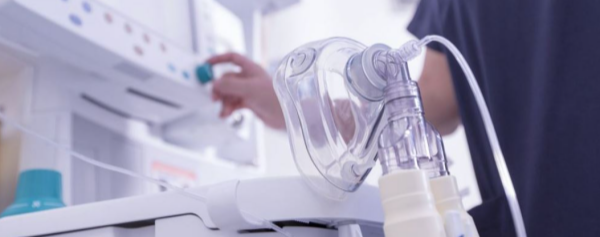What is sleep apnea?

Sleep apnea is a common sleep disorder that can lead to repeated episodes of breathing pauses or weakened breathing during sleep. This condition can affect sleep quality and have a negative impact on overall health. This article will provide a detailed introduction to the definition, symptoms, and possible consequences of sleep apnea, as well as the circumstances in which ventilator therapy is needed.
I. Definition and symptoms of sleep apnea:
1. Definition: Sleep apnea refers to the occurrence of repeated breathing pauses or weakened breathing during sleep, resulting in insufficient oxygen supply. It is generally divided into two types: obstructive sleep apnea and central sleep apnea. Obstructive sleep apnea is caused by the obstruction or partial obstruction of the respiratory tract, while central sleep apnea is caused by abnormalities in the central nervous system.
2. Symptoms: Common symptoms of sleep apnea include snoring at night, frequent awakenings, poor sleep quality, daytime sleepiness, fatigue, and lack of concentration. Some people may also experience other related symptoms such as headaches, difficulty chewing, and decreased sexual desire.
II. Indications for ventilator therapy:
1. Severe sleep apnea syndrome: For patients diagnosed with severe obstructive sleep apnea syndrome, ventilator therapy is one of the common treatment methods. These patients experience frequent breathing pauses during sleep, which seriously affect sleep quality and quality of life.
2. Respiratory failure caused by other etiologies: In addition to sleep apnea syndrome, certain other etiologies may also lead to respiratory failure, such as lung diseases and neuromuscular diseases. In these cases, ventilator therapy can provide assisted ventilation to improve the patient's respiratory function.
3. Central sleep apnea: For patients with central sleep apnea, ventilator therapy may need to be combined with other treatment methods such as oxygen therapy or drug therapy. Ventilators can provide assisted ventilation support to help patients maintain normal oxygen supply.
III. Treatment methods:
1. Continuous Positive Airway Pressure (CPAP): CPAP is a common ventilator treatment method suitable for patients with obstructive sleep apnea syndrome. This treatment is connected to the patient's nose or mouth through a ventilation tube and provides a stable positive pressure air to keep the respiratory tract open and prevent breathing pauses. CPAP treatment requires an adaptation period, and patients need to wear the ventilator for a long time during sleep.
2. Oral appliance: Oral appliances are a device that can be used to treat mild to moderate obstructive sleep apnea. It is usually custom-made by a dentist and can be adjusted according to the patient's oral structure and needs. Oral appliances help maintain the patency of the respiratory tract by changing the position of the jaw and tongue.
3. Surgical treatment: For some severe obstructive sleep apnea patients, surgery may be an option. Surgery may include expanding the respiratory tract, removing obstructions, or changing the maxillofacial bone structure. However, surgical treatment is usually the last choice and should be decided based on the patient's specific situation and the advice of a professional doctor.
4. Behavioral and lifestyle changes: In the process of treating sleep apnea, some behavioral and lifestyle changes are also important adjunctive measures. This includes losing weight (if the patient is obese), avoiding alcohol and smoking, adjusting sleep positions (such as sleeping on the side), and avoiding excessive sleep. These changes can help relieve symptoms and improve treatment effects.
It should be emphasized that the choice of treatment method should be individualized based on the specific situation and etiology of each patient. When determining the most suitable treatment plan, it is recommended to consult with a doctor or sleep disorder specialist for detailed consultation and evaluation.
V. Conclusion:
Sleep apnea is a common sleep disorder that may have a negative impact on the patient's sleep quality and overall health. In appropriate circumstances, ventilator therapy can be used to improve the patient's respiratory function and sleep quality. However, the treatment plan should be individualized and adjusted according to the specific situation of each patient. If you or someone around you suspects having sleep apnea problems, it is recommended to consult a medical professional for evaluation and treatment advice.
About us.
Shenyang HOlian Precision instrument co.,Ltd founded in 2017,is specialized production of oxygen generator accessories :Miniature solenoid valve for Portable Medical oxygen generator,4 Way 2 position Medical oxygen generator,3L to 10L Medical Oxygen Generator Solenoid Valve,pressure regulator assembly for oxygen concentrator,Pressure reducing Assembly for oxygen concentrator,Pinhole flowmeter of oxygen concentraror,Pinhole flowmeter of Medical oxygen concentrator,5L flowmeter for oxygen concentrator,Special firesafe Valve for oxygen concentrator,Firesafe Cannula Valve Oxygen Supply Tubing Connector,Oxygen primary filter,Medical Grade Filter,Check valve (material PA6),Check valve (material ABS),Oxygen generator accessories Molecular sieve tank head,Oxygen Concentrator Accessories Air Filters,Oxygen Concentrator Accessories NPT1/8-∅8 Connector,Oxygen Concentrator Accessories NPT1/8-∅10 Connector,Oxygen Concentrator Accessories 3 way Nozzle,Oxygen Concentrator Accessories 90° Nozzle,Mold manufacturing and i jection molding.
